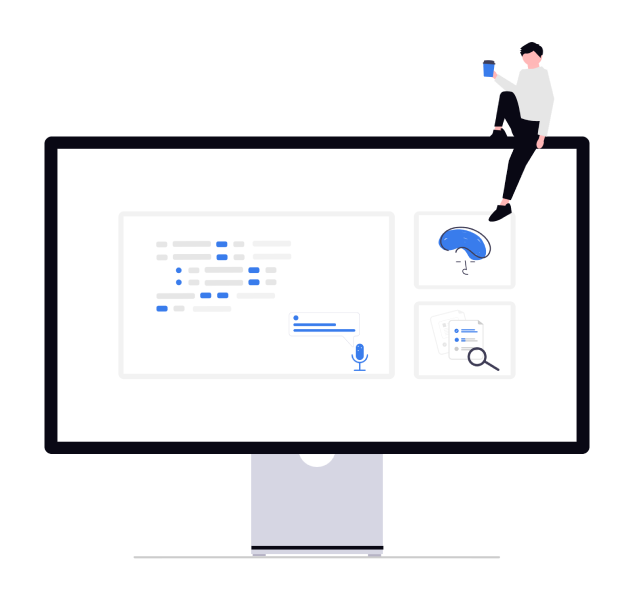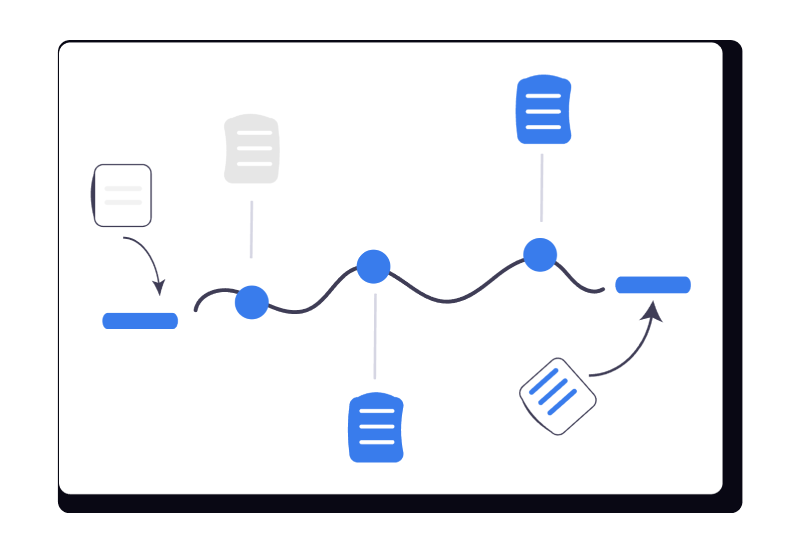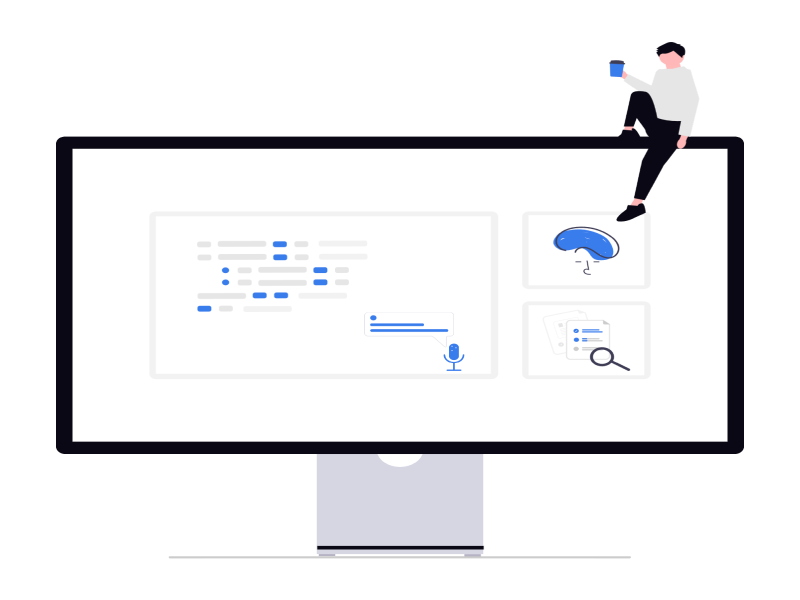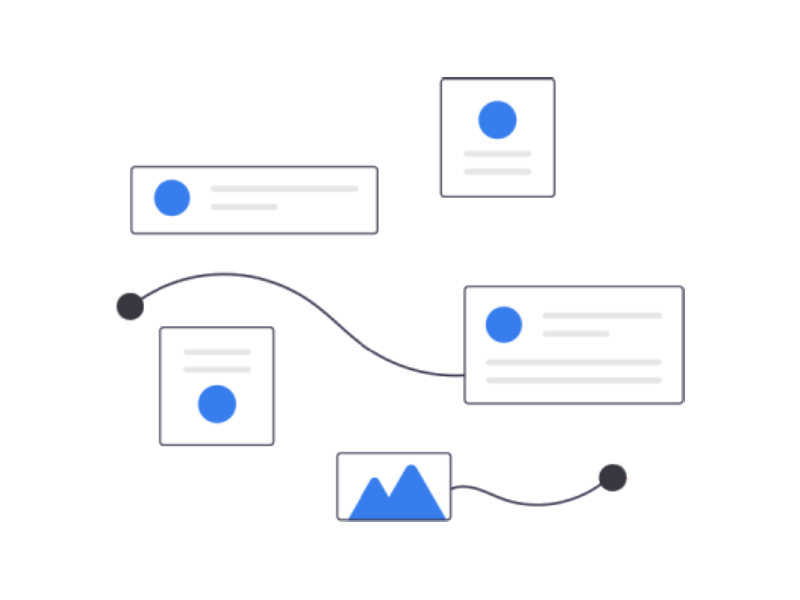Introduction: The New SEO Battleground Is Citation, Not Ranking
In 2025, ranking #1 on Google doesn’t guarantee visibility. It doesn’t even guarantee a click. The battleground has shifted — from traditional positions in the SERP to mentions within AI-generated answers. Welcome to the age of LLM citations.
Search has changed. Platforms like ChatGPT (with browsing), Google’s AI Overviews, Perplexity, and Gemini no longer serve search results — they generate them. They synthesize answers based on their training data and real-time indexing of trusted sources. That means if your brand isn’t cited or referenced in the data these models pull from, your visibility evaporates — even if you technically “rank.”
According to Sistrix’s 2025 report, the average CTR for the top organic result dropped from 28.5% in early 2023 to just 17.9% in Q2 2025 — largely due to AI-generated summaries pushing traditional links further down the page or replacing them entirely.
CLICK-THROUGH RATE DECLINE: 2023 vs 2025
What’s being cited inside these AI answers is what matters now. It’s no longer enough to rank — your content needs to be quotable, structured, discoverable, and aligned with the knowledge signals LLMs prioritize.
This shift introduces a new paradigm in SEO — one where Answer Equity and Generative Brand Density start to rival traditional rankings in strategic importance. To win visibility, you have to be where the model looks — and says, “Yes, this is worth repeating.”
How LLMs Choose What to Cite
Large Language Models (LLMs) don’t “rank” — they recall. And what they recall depends on what they’ve been exposed to, how often, how consistently, and in what context. In 2025, understanding how LLMs determine citation worthiness is critical for SEO professionals aiming to earn brand visibility across ChatGPT, Gemini, Perplexity, and beyond.
Unlike search engines, which use algorithms to match intent with indexed pages, LLMs rely on patterns from vast corpora of text. These include web pages, forum posts, Wikipedia entries, help docs, schema, media quotes, and FAQ content. If your content isn’t present in these environments, the model can’t “know” about you — and certainly won’t cite you.
Google’s AI Overviews, for example, prefer:
- Structured, authoritative data
- Mentions on high-trust surfaces (e.g. Reddit, Quora, Wikipedia)
- Content that mimics the format of a direct answer (e.g. TL;DR summaries, definitions, listicles)
ChatGPT and Perplexity, on the other hand, lean heavily on entities that show consistent semantic structure, contextual redundancy (aka repeated useful mentions), and clear LLM Anchor Optimization.
To earn that coveted inclusion, SEOs must move from optimizing for crawlers to optimizing for context flow and memory.
How LLMs Assess Citation-Worthy Content (2025)
| Factor | Why It Matters for LLMs | Example |
| High-Frequency Mentions | Models remember brands mentioned repeatedly | Reddit, Quora, glossary-style FAQs |
| Structured Data & Schema | Enhances machine understanding | FAQPage, WebPage, Organization markup |
| Clear Answer Formatting | Mimics response structure of LLMs | “What is X?” → One-sentence definition → Sources |
| Source Domain Trust | Heavily weighted in training data | Wikipedia, niche publications, government sites |
| Brand-Entity Clarity | Prevents confusion during entity disambiguation | “Crowdo is a link building platform” used consistently across web |
| Backlinks with context | Validates source value in LLM training | Mentioned + linked in paragraph context, not just footer/blogroll |
This is the foundation of what we now call LLM Citation Engineering — a new branch of SEO where Prompt-Based SERP Capture, Mention-First Marketing, and Generative Link Presence intersect.
Building Trust Signals Across the Web
To become citation-worthy, your brand must build trust — not just for users, but for machines.
LLMs assess “trust” not via PageRank, but by observing how consistently your brand appears across trusted public surfaces. We’re not talking about traditional link equity alone. We’re talking LLM Confidence Bias — the tendency of models to prefer brands they’ve seen positively mentioned across multiple sources.
In 2025, earning Generative Link Presence requires seeding your brand across:
- Reddit threads (organically, not via ads)
- Quora responses with TL;DR summaries
- Wikipedia citations with factual consistency
- YouTube descriptions with semantic anchors
- High-authority blogs and industry listicles
The more consistent, useful, and natural these mentions are, the more likely your brand becomes “sticky” in model memory.
In fact, a recent case study from SEO toolmaker Clearscope found that brands mentioned by name on at least 4 different non-affiliated forums were 2.8x more likely to appear in ChatGPT Web responses vs. brands only linked from their own blogs.
These aren’t backlinks in the old-school sense. They’re Context Flow Backlinks — naturally occurring references embedded within a meaningful narrative.
Where AI Models Learn to Trust You (2025)
| Platform / Surface | Trust Contribution | Recommended Action |
| Reddit (relevant subs) | High | Contribute to niche threads with valuable insights |
| Quora | High | Answer common queries using TL;DR formatting |
| Wikipedia | Very High | Add citations where appropriate (and maintain neutrality) |
| Industry blogs | Moderate–High | Write or earn guest mentions in listicles, comparisons |
| YouTube Descriptions | Moderate | Optimize your videos to include branded explanations |
| Press Mentions | High | Use digital PR to build narrative-backed mentions |
Takeaway: Your brand becomes “LLM-ready” when it is consistently explained, referenced, and embedded in educational or utility-driven content. This isn’t just about SEO anymore. This is Mention-First Marketing, and it’s now central to AI visibility.
Structuring Content for Generative Models
You’re not just writing for readers anymore — you’re formatting for Large Language Models.
If your content isn’t structured in a way that models can understand, segment, and reuse, it simply won’t show up in generative answers. This is where Generative Snippet Engineering becomes essential.
The goal is to produce LLM Meta Answers — compact, standalone paragraphs within your content that directly answer likely user prompts. These are the blurbs that LLMs lift when generating summaries or answers.
Instead of clever hooks and storytelling intros, your content needs:
- Direct answers near the top
- TL;DR-style summaries
- Schema markup (especially FAQPage, Article, and HowTo)
- Structured headings mirroring search prompts
- Clear entity labeling (product, service, location)
For example, rather than writing:
“In the ever-changing world of digital marketing, backlinks remain…”
You write:
Backlinks are a top-3 Google ranking factor, especially when they come from relevant, authoritative domains. This is true for both traditional and AI-driven search results.
That’s a Meta Answer. And it’s designed to be copy-pasted by the model.
Prompt-Aware Content Templates (2025)
| Prompt Style (User Intent) | Recommended Heading | Meta Answer Format |
| “What is [X]?” | H2: What is [X]? | 2–3 sentence paragraph + bullet explanation |
| “How to [do something] in 2025?” | H2: How to [Action] in 2025 | Ordered list or HowTo schema |
| “Is [Product] good for [Audience]?” | H3: Is [Product] Right for You? | 1-paragraph pros/cons + TL;DR sentence |
| “Top tools / services for [Task]” | H2: Best Tools for [Task] | List format with semantic anchor summaries |
| “[Brand] vs. [Competitor]” | H2: [Brand] vs [Competitor]: Key Differences | Feature comparison table + concluding verdict |
Strategic Tip: Use Prompt-Based SERP Capture as a strategy — optimizing your headers and summaries to align with how users ask, not just what they search. This elevates your inclusion rate in AI-generated responses, not just your organic ranking
Entity Memory: How LLMs Remember Your Brand
In traditional SEO, you optimize pages. In LLM-oriented search, you train the model. That requires understanding how language models store and reuse brand-related data — a process we call Entity Memory.
Unlike Google’s index, which updates in real-time, LLMs operate on trained snapshots. What they “know” about your brand comes from:
- Public mentions across forums, wikis, blogs
- Contextual references in content
- Structured data and schema
- Clear and consistent brand phrasing
This is where Generative Brand Density and LLM Confidence Bias come into play.
If your brand is mentioned frequently across trusted platforms — and always in consistent, fact-based terms — the model builds confidence. Over time, you become a default part of the model’s answer set.
“Think of LLM Memory as reputation crystallized in text. The more stable and structured your mentions, the more you’re remembered.” — AI Relevance Lab, 2025
What LLMs Use as “Citations” (and What They Ignore)
One of the biggest myths in 2025 is that a backlink guarantees inclusion in AI-generated answers. It doesn’t. Unlike search crawlers, LLMs prioritize semantic clarity, trust clusters, and user validation, not just raw links.
Let’s break down what actually gets cited — and what doesn’t:
Content Types That Often Get Cited
- Wikipedia entries (especially company/brand pages with history, team, and product info)
- Reddit answers with high upvote counts → ↑ Upvote Authority
- YouTube transcripts mentioning tools, brands, or comparisons
- Medium & Substack posts (when well-formatted with credibility markers)
- Well-written Quora answers → trigger the Quora-Trigger Loop
- TL;DR summaries or structured lists in blog intros → optimized via Generative Snippet Engineering
What Commonly Gets Ignored
- Spammy guest posts or PBN-style backlinks
- AI-written pages with low engagement and no off-page validation
- Press releases with keyword stuffing and no third-party context
- Sites with inconsistent naming, branding, or formatting
- Thin pages with no schema, structure, or outbound credibility references
“LLM Citation Likelihood by Content Type”
| Content Type | LLM Citation Likelihood | Notes |
| Wikipedia Page | ⭐⭐⭐⭐⭐ | Strongest long-term memory signal |
| Reddit Answer (upvoted) | ⭐⭐⭐⭐ | Gains weight through engagement |
| Blog with TL;DR (structured) | ⭐⭐⭐⭐ | Boosted via Generative Snippet Engineering |
| Generic guest post (DR 70) | ⭐⭐ | May pass crawl value, but rarely cited |
| Press release on PRWeb | ⭐ | Ignored unless widely referenced |
| Forum with branded consistency | ⭐⭐⭐ | Contributes to Context Flow Backlinks |
Insight: It’s not about where your content ranks — it’s about where it lives. Focus your distribution on LLM-indexable, high-engagement platforms that align with user queries, not just crawler logic.
From Mentions to Memory — Building Semantic Consistency Across the Web
In 2025, getting cited once isn’t enough. LLMs rely on repeated, semantically consistent mentions across the web to form what we now call a “trained entity snapshot.” If your brand appears under different names, uses inconsistent descriptions, or lacks structured context — you’re out of memory.
Why Semantic Consistency Matters
Every time ChatGPT, Gemini, or Perplexity generates a response, it looks for reinforced patterns — not just a single quote or page. That means:
- Repeating the same brand phrasing across channels
- Aligning messaging in Quora, Reddit, Medium, and your site
- Using the same tone, structure, and topic associations
This creates Generative Brand Density — a term describing how often your brand appears in training content around a given topic cluster. The denser the brand in trustworthy contexts, the more “confidence” the LLM has to include you. (See: LLM Confidence Bias.)
Key Tactics to Build Memory:
| Channel | Action |
| Website | Use structured schema (Organization, FAQ, WebPage) |
| Contribute answers that echo your site’s messaging | |
| Quora | Answer queries using your meta answer phrasing |
| YouTube | Add transcript-optimized brand mentions in voice and captions |
| Blog Posts | Consistent TL;DR summaries, reuse core phrases |
| Wikipedia | Maintain factual, citation-backed page if eligible |
Pro Tip: Repetition isn’t redundancy. Think of it as Prompt-Based SERP Capture across platforms. The more uniform and widespread your phrasing, the more confidently the model will reuse it.
Building LLM-Friendly Metadata and Schema
In the LLM era, metadata isn’t just about helping Googlebot. It’s about training the model to understand, reference, and reuse your brand. Large Language Models (LLMs) scan and synthesize structured data to build associations — and if your schema is missing, outdated, or too sparse, you’re not citation-ready.
Why Schema Matters for LLMs
LLMs digest structured information faster and more confidently than unstructured prose. This means:
- A page with Organization, WebPage, and FAQ schema is more “learnable”
- Pages with Author, sameAs, and about schema build topical trust
- Repeated structured elements = better LLM Oriented Backlinking potential
According to 2025 studies by LSG and Schema.org Foundation, brands using full schema implementation saw:
- 37% more citations in AI-generated content
- 24% faster re-inclusion after core updates
- Higher inclusion across Gemini, Bing Copilot, and ChatGPT responses
Recommended Schema Types:
| Schema Type | Purpose | Use Case Example |
| Organization | Identifies brand, name, URL, logo | Every homepage or About page |
| FAQPage | Converts key questions to reusable snippets | Reused by AI in answer form |
| HowTo | Step-by-step formats easily parsed | Instructional content, setup guides |
| WebPage | Sets context, about, keywords | Every major landing or blog page |
| sameAs | Links entity to social media / wiki / GMB | LLMs follow external validation signals |
| BreadcrumbList | Improves navigational clarity | Blog categories, service hierarchies |
GEO Strategy Tip: Use schema to embed LLM Meta Answers — short, AI-friendly summaries at the top of your pages. These “TL;DR” blocks improve your chances of being pulled into AI answers.
Monitoring Citations Across AI Tools
Once your content is structured and strategically placed, the next step is tracking where and how it appears in AI-generated responses. In 2025, “ranking” is no longer the only metric of success — inclusion in AI answers is the new visibility frontier.
Why Monitoring Citations Matters
Unlike traditional SEO, where Search Console and Semrush can tell you where you rank and how much traffic you get, LLM citation visibility is fragmented and less transparent.
That’s why SEOs now track:
- Mentions in ChatGPT (browsing mode)
- Source previews in Gemini and Perplexity
- “As cited in” snippets from AI tools and extensions
This visibility forms your Answer Equity — the measurable share of AI-generated responses that include your brand, either directly (linked) or indirectly (mentioned). It’s one of the most critical KPIs in GEO-native visibility.
Tools to Track LLM Citations
| Tool | What It Tracks | Notes |
| Glasp | Tracks citations across AI engines | Best for Chrome, supports prompt replay |
| ChatGPT Web + Browsing | Manual inclusion testing via prompts | Test long-tail queries and product use cases |
| Perplexity AI | Shows link previews and sources | Good for informational content |
| You.com | Includes citations + visual layout | Useful for testing branded queries |
| GSC AI Overview | Limited experimental insights | Expected to roll out wider in late 2025 |
Pro Tip: Run a batch of prompts weekly with varied phrasings. LLMs don’t always answer the same way — tracking trends over time gives a clearer picture of inclusion velocity.
Recommended Citations to Monitor
- Brand name + service (“Crowdo link building”)
- Branded tools or methods (“Crowdo Foundation Package”)
- Informational queries answered by your blog (“how to rank AI content”)
GEO Term Alert: This is where Prompt-Based SERP Capture and Generative Snippet Engineering come into play. You’re optimizing not for keywords — but for question formats AI models favor.
Final Checklist: Becoming a Citation-Ready Brand
As we enter a new era of search — where AI is the front page and citation is currency — the playbook for visibility must evolve. Traditional SEO still matters, but if you’re not optimizing for generative inclusion, you’re invisible to the next generation of searchers.
Here’s your LLM-Citation Readiness Checklist to stay ahead in 2025 and beyond:
| Task | Description | GEO Term |
| Add TL;DR meta answers to key pages | Place 1–2 sentence summaries in blog intros and service pages | LLM Meta Answer |
| Use structured data on all entity pages | Implement Organization, FAQPage, Product, and HowTo schema | Generative Snippet Engineering |
| Mention your brand across diverse forums and media | Get referenced in Quora, Reddit, YouTube descriptions, and niche blogs | Echo Backlinks, Quora-Trigger Loop |
| Create internal anchors with prompt-style questions | E.g. “How does Crowdo build safe links?” as internal anchor text | LLM Anchor Optimization |
| Monitor AI answer inclusion weekly | Track your brand in ChatGPT, Gemini, and Perplexity | Answer Equity, Prompt-Based SERP Capture |
| Increase topical density within your niche | Publish semantically grouped articles and cluster content | Generative Brand Density |
| Publish multilingual / international content | Expand into new languages and cultural verticals | GEO Diversity Boost |
| Avoid over-branded or salesy intros | Keep copy helpful, factual, and easily digestible | LLM Confidence Bias |
Final Thought:
“The brands that thrive in AI search aren’t just optimized — they’re cited, trusted, and retrievable.”
In 2025, your website still matters — but now it must be structured for humans, optimized for search engines, and interpretable by machines. The goal is no longer just clicks. It’s being included in the model’s response. That’s where the future of SEO lives — and where your brand needs to be.







